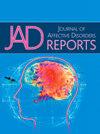The prevalence of mental health and psychosocial concerns among South African student-athletes
Q3 Psychology
引用次数: 0
Abstract
Purpose
This investigation aimed to identify the prevalence of mental health and psychosocial concerns in a group of South African student-athletes.
Procedure
A cross-sectional research design, following a quantitative research approach, was used with a convenient sample. Two hundred (n=200) student-athletes representing various South African universities, with an average age of 20.45 years, avail their data for research purposes, 72 males and 128 females. Data was collected during service delivery in clinical practice using a psychological test battery yielding information on depression, anxiety, and stress (DASS-21), sleep behaviour (PROMIS scale), alcohol consumption (AUDIT-C), eating behaviour (BEDA-Q) and smoking behaviour.
Findings
Frequencies indicated that 6.5% showed extremely severe levels of depression, while 4.5% indicated severe and 13.0% moderate levels of depression. Fifteen percent of the athletes noted experiencing extremely severe levels of anxiety, 6.5 % severe and 23.5% moderate levels of anxiety. One percent of the athletes displayed extremely severe levels of distress, 6% had severe levels of distress, and 14% had moderate distress levels. Thirty-five percent indicated mild disturbed sleeping behaviours, with 20% reporting moderate and 15% severe symptoms of disturbed sleeping behaviour. Twenty-nine percent of the athletes noted adverse alcohol use, while 75% indicated the presence of adverse eating behaviour. Twelve percent of the athletes indicated that they smoke.
Conclusion
Student-athletes exhibit elevated levels of mental health challenges and psychosocial stressors, which warrant significant attention and intervention. The findings furthermore highlight the significance of implementing a system to facilitate the early identification of athletes experiencing mental health symptoms. This will encourage athletes who require assistance to seek help from a registered health professional, and it will make it easier for athletes to proceed with further assessment and treatment, if necessary. Also, early detection and intervention may help prevent the escalation of symptoms and the development of a mental health disorder. Tertiary institutions should use this information to inform policy changes to improve mental health support structures for athletes. Understanding the prevalence of mental health issues allows for developing strategies to support the student-athlete's well-being, overall health and, ultimately, their sports performance.
南非学生运动员中心理健康和社会心理问题的普遍程度
目的本调查旨在确定一组南非学生运动员的心理健康和社会心理问题的患病率。采用定量研究方法进行横断面研究设计,选取方便的样本。代表南非各大学的200名(n=200)学生运动员,平均年龄为20.45岁,利用他们的数据进行研究,其中72名男性和128名女性。在临床实践的服务提供过程中,通过心理测试收集数据,获得抑郁、焦虑和压力(DASS-21)、睡眠行为(PROMIS量表)、饮酒(AUDIT-C)、饮食行为(BEDA-Q)和吸烟行为等信息。研究结果表明,6.5%的人表现为极度严重的抑郁症,而4.5%的人表现为重度抑郁症,13.0%的人表现为中度抑郁症。15%的运动员经历了极度严重的焦虑,6.5%的人经历了严重焦虑,23.5%的人经历了中度焦虑。1%的运动员表现出极度严重的痛苦,6%的运动员表现出严重的痛苦,14%的运动员表现出中度的痛苦。35%的人表示有轻微的睡眠障碍行为,20%的人报告有中度睡眠障碍行为,15%的人报告有严重的睡眠障碍行为。29%的运动员注意到不良饮酒,而75%的运动员表示存在不良饮食行为。12%的运动员表示他们吸烟。结论学生运动员表现出较高的心理健康挑战和社会心理压力,值得重视和干预。研究结果进一步强调了实施一个系统的重要性,以促进早期识别出现心理健康症状的运动员。这将鼓励需要帮助的运动员向注册的健康专业人员寻求帮助,并使运动员在必要时更容易进行进一步的评估和治疗。此外,早期发现和干预可能有助于防止症状升级和精神健康障碍的发展。高等教育机构应利用这些信息为政策变化提供信息,以改善运动员的心理健康支持结构。了解心理健康问题的普遍性有助于制定策略,以支持学生运动员的福祉、整体健康,并最终提高他们的运动成绩。
本文章由计算机程序翻译,如有差异,请以英文原文为准。
求助全文
约1分钟内获得全文
求助全文
来源期刊

Journal of Affective Disorders Reports
Psychology-Clinical Psychology
CiteScore
3.80
自引率
0.00%
发文量
137
审稿时长
134 days
 求助内容:
求助内容: 应助结果提醒方式:
应助结果提醒方式:


